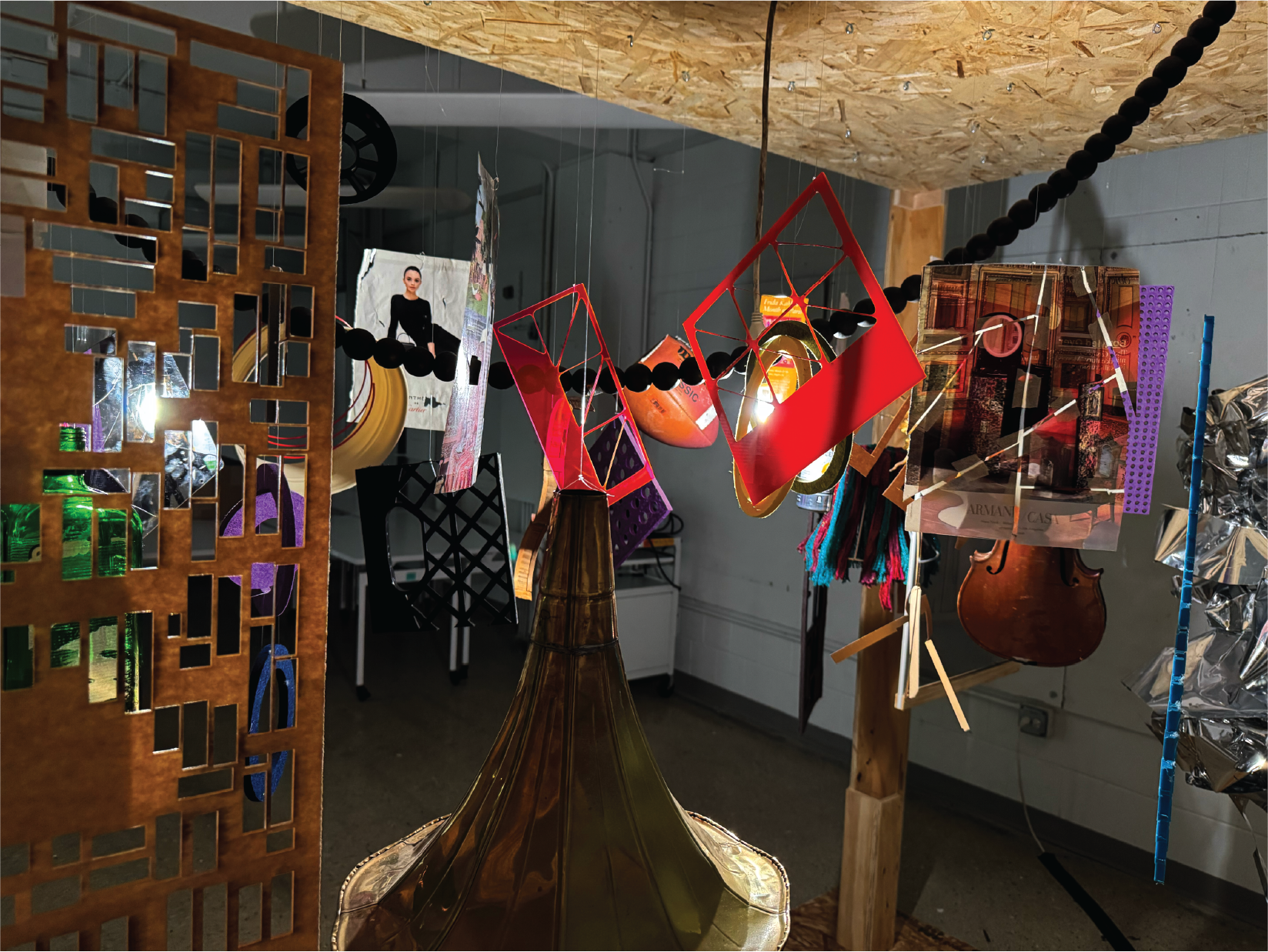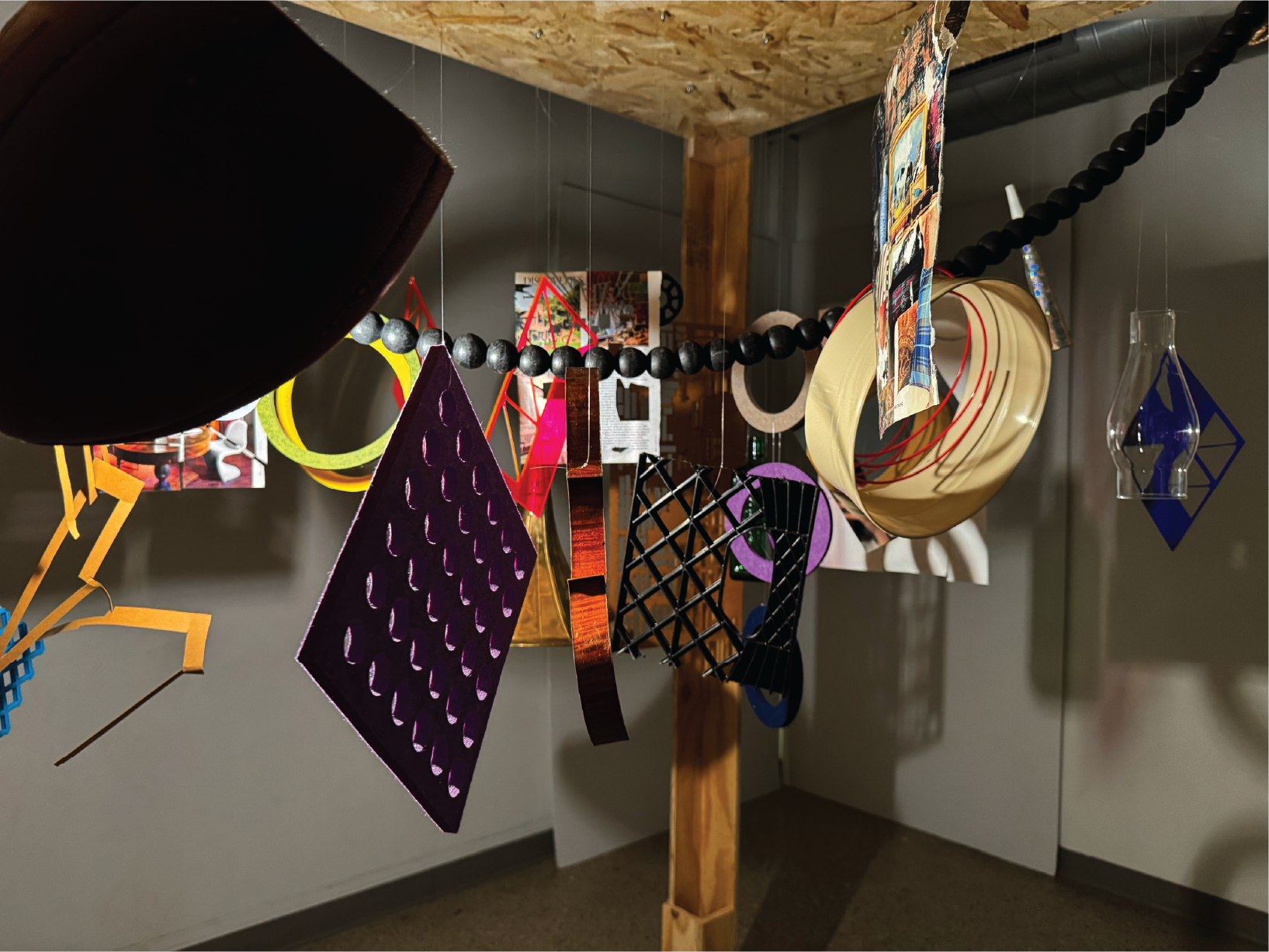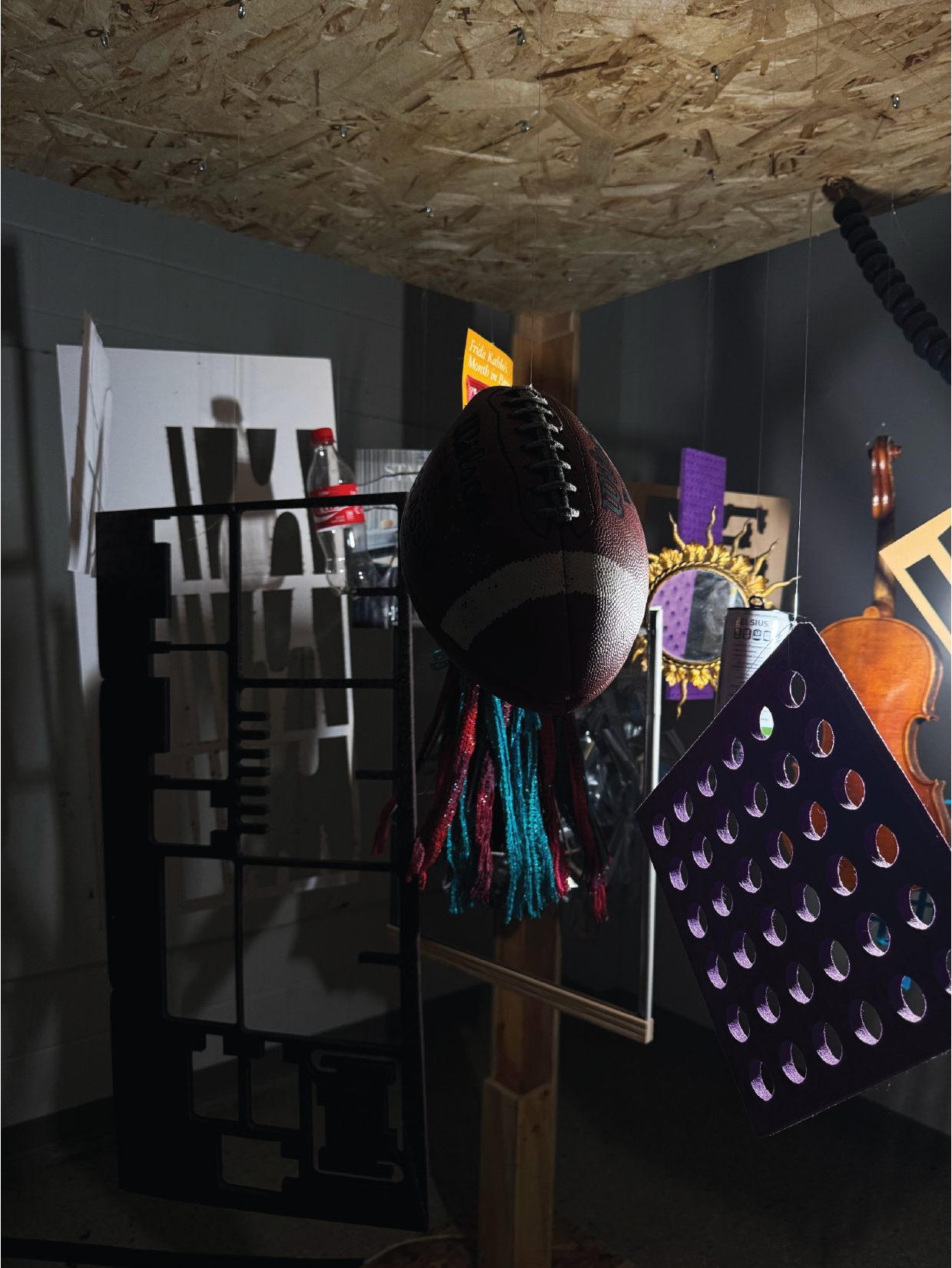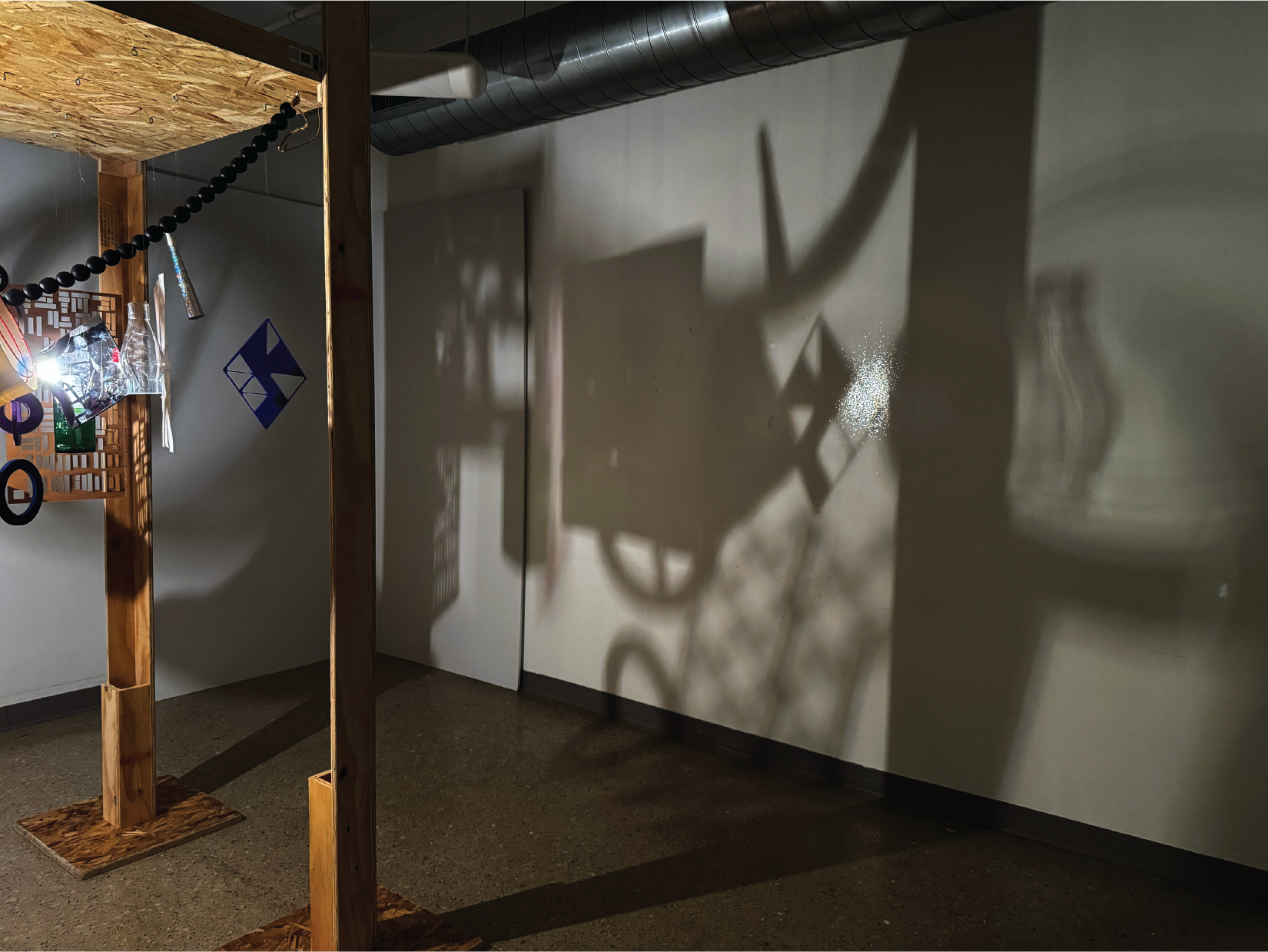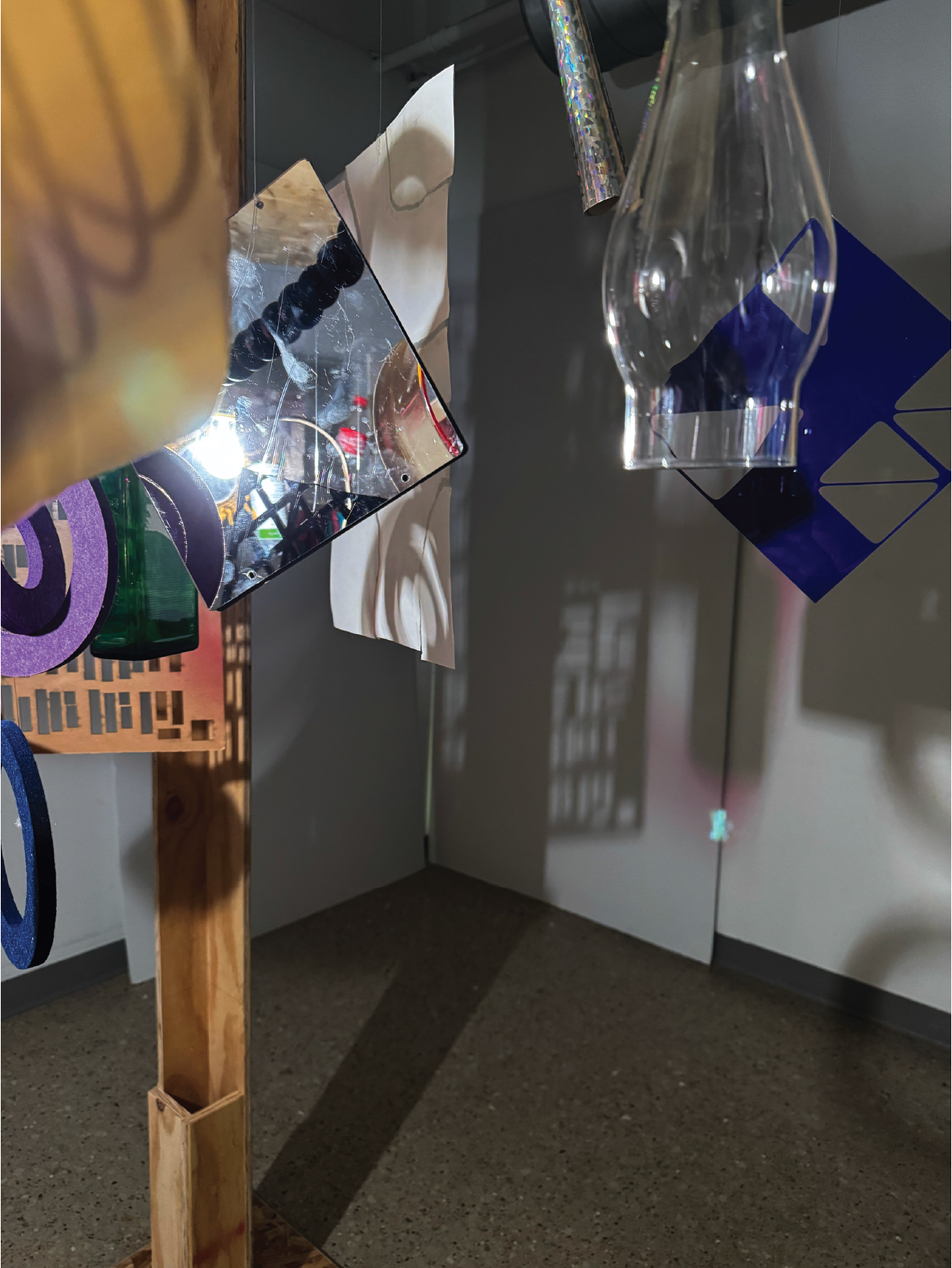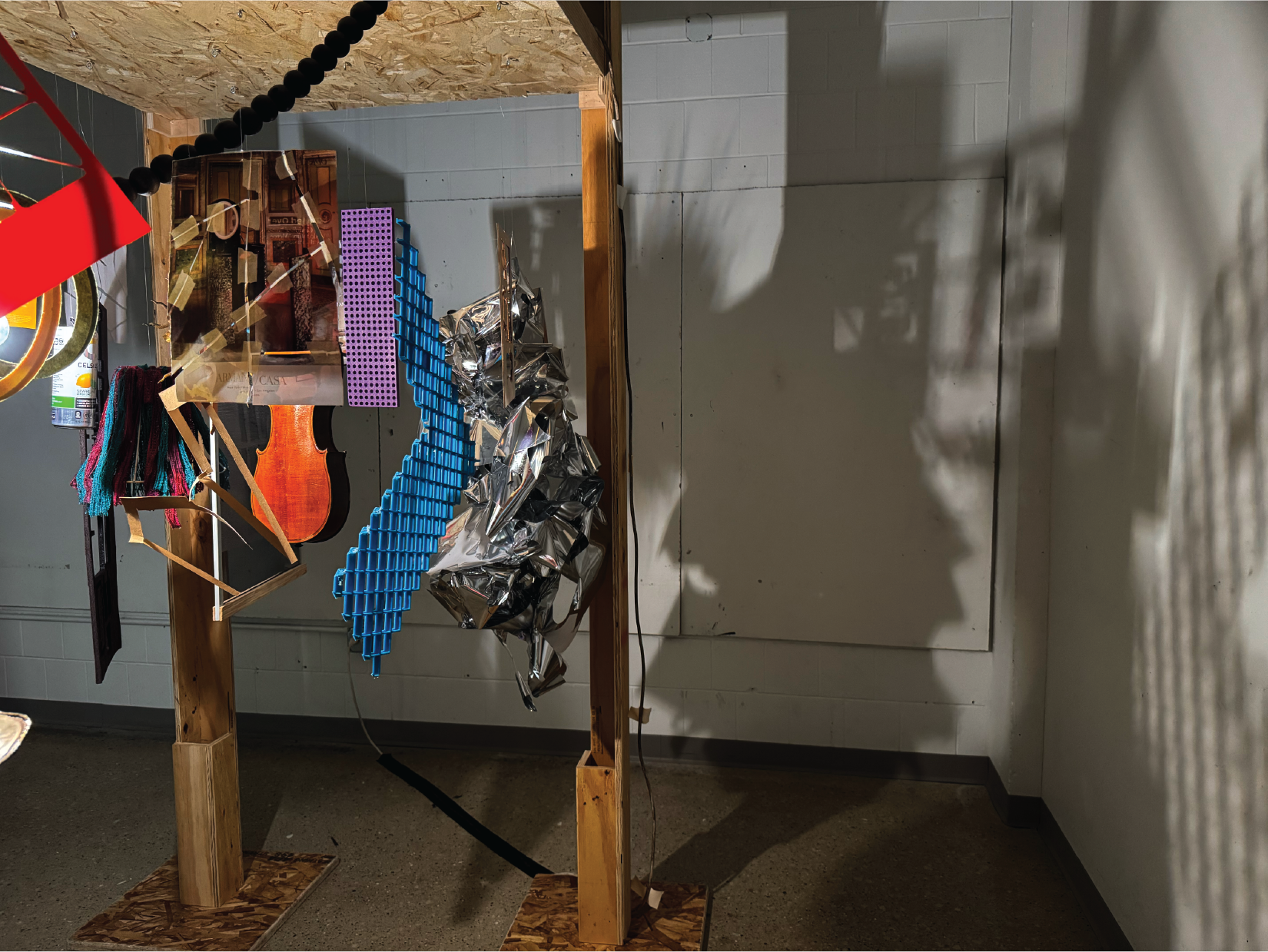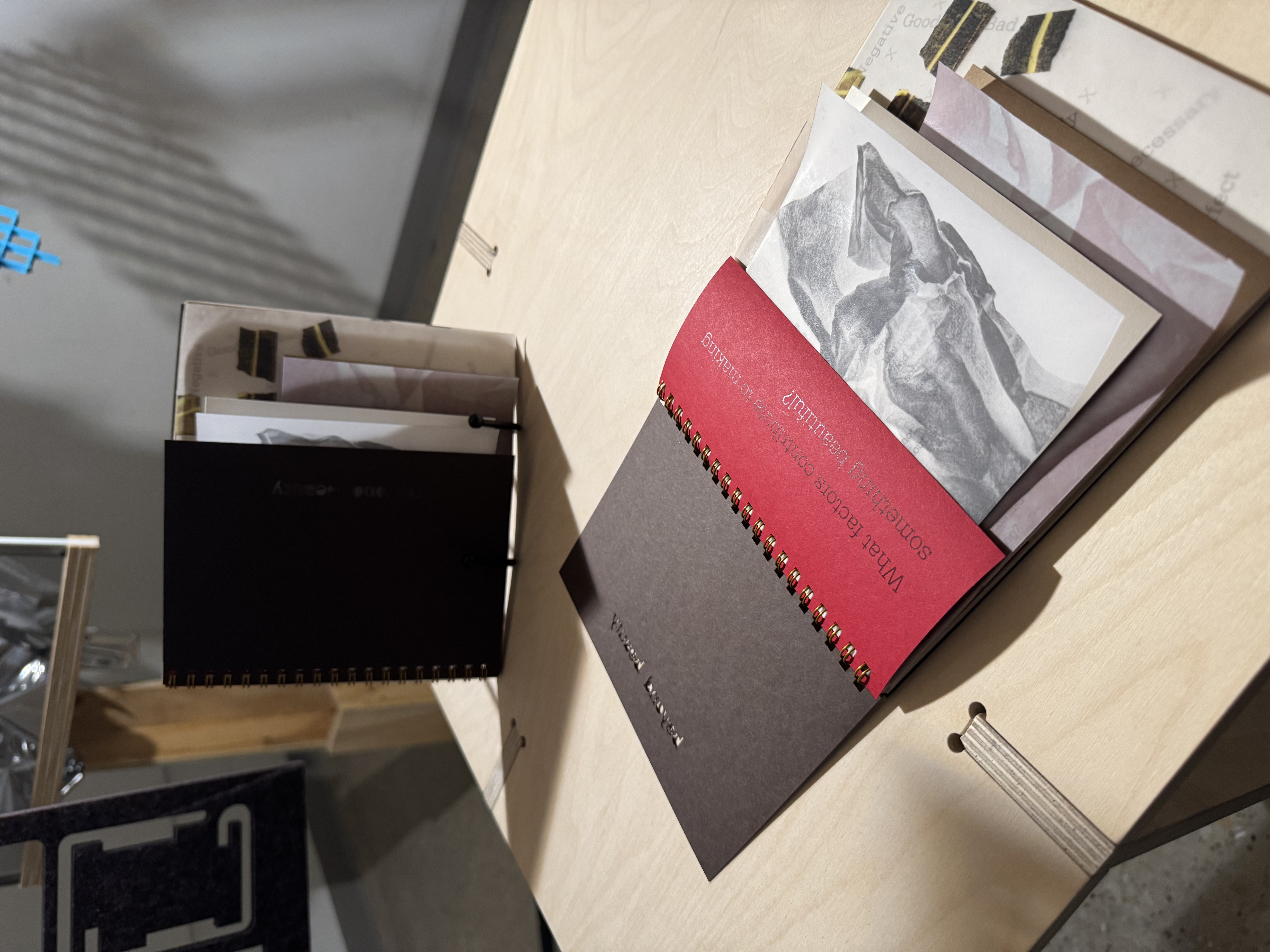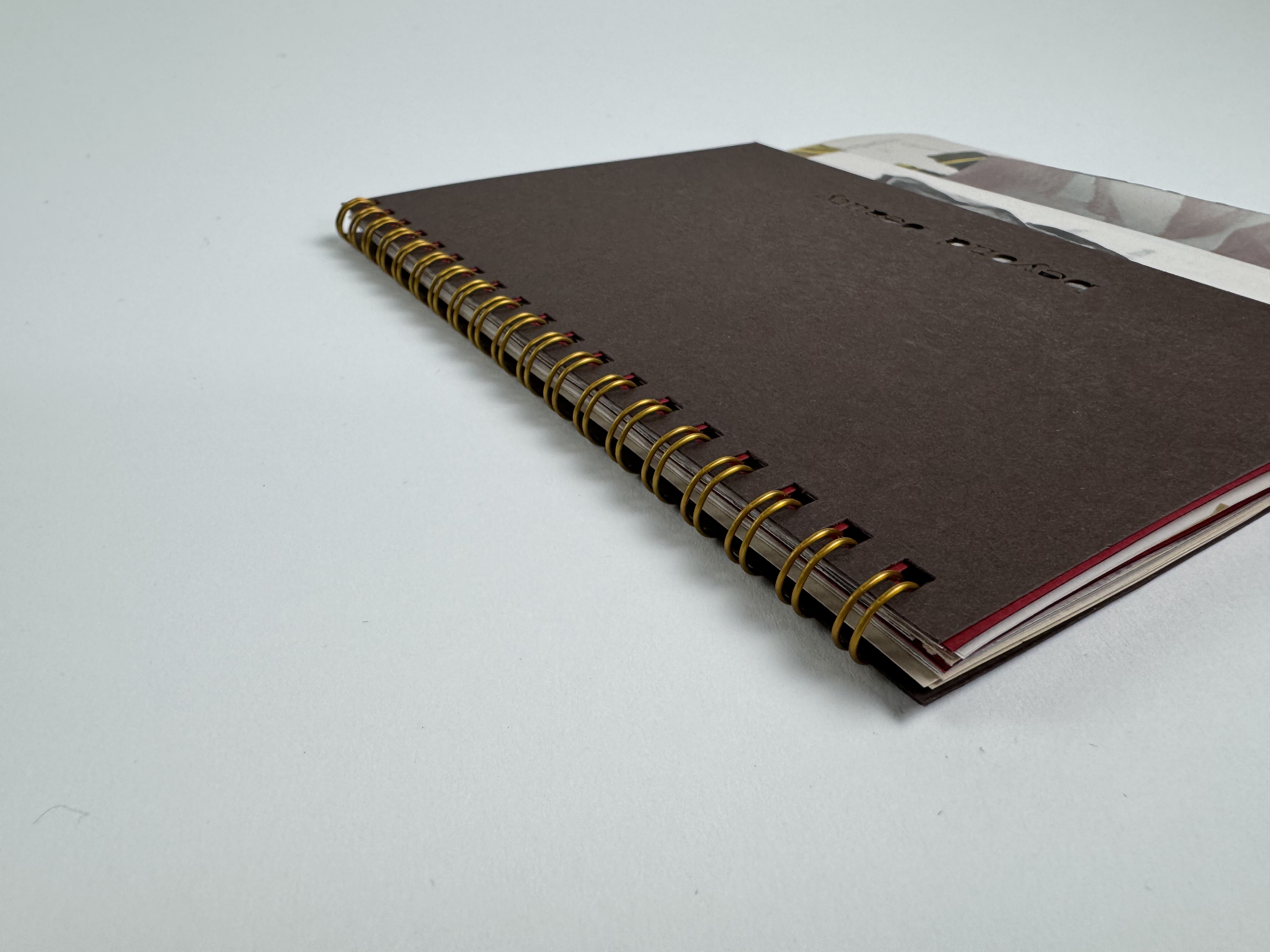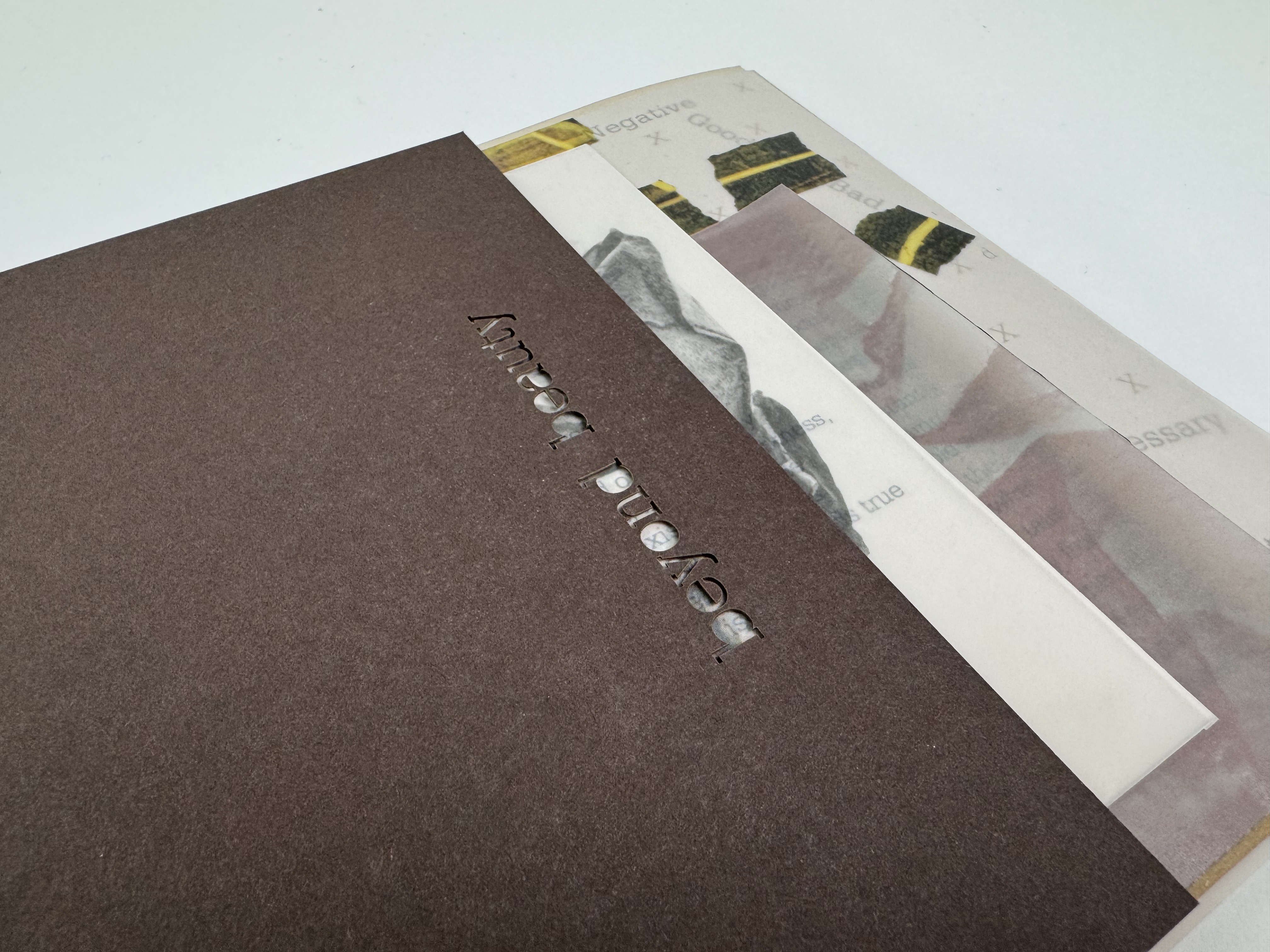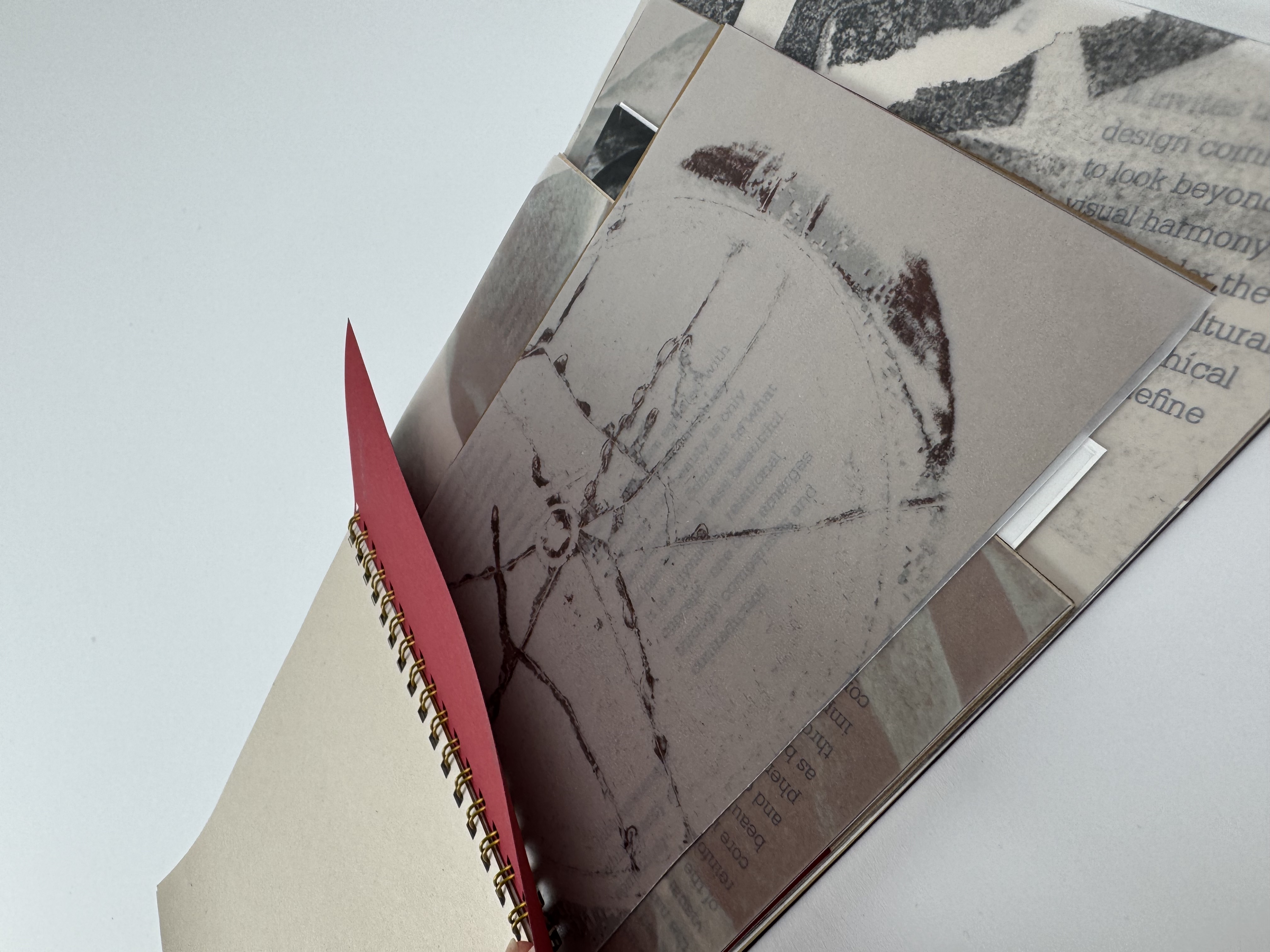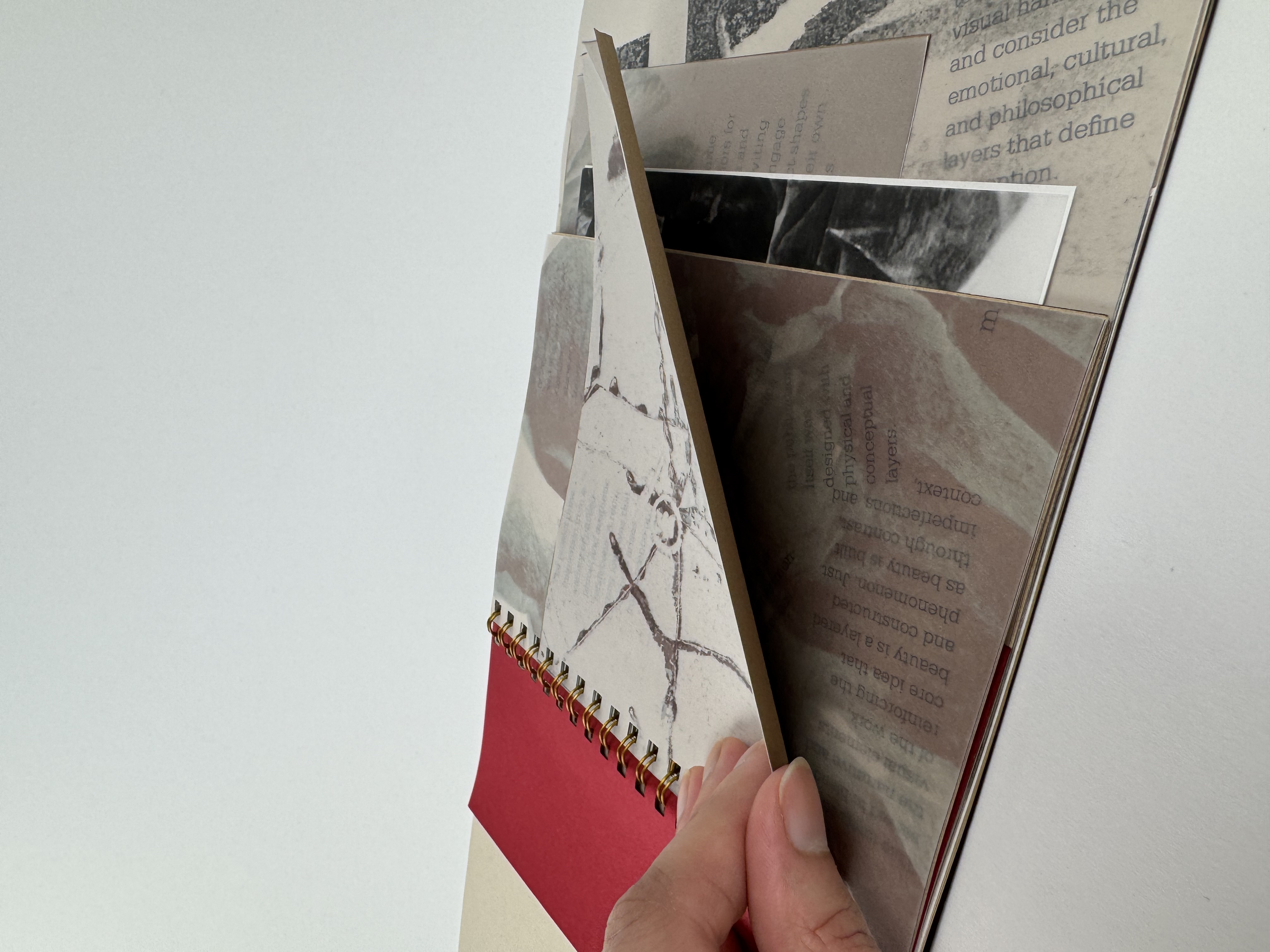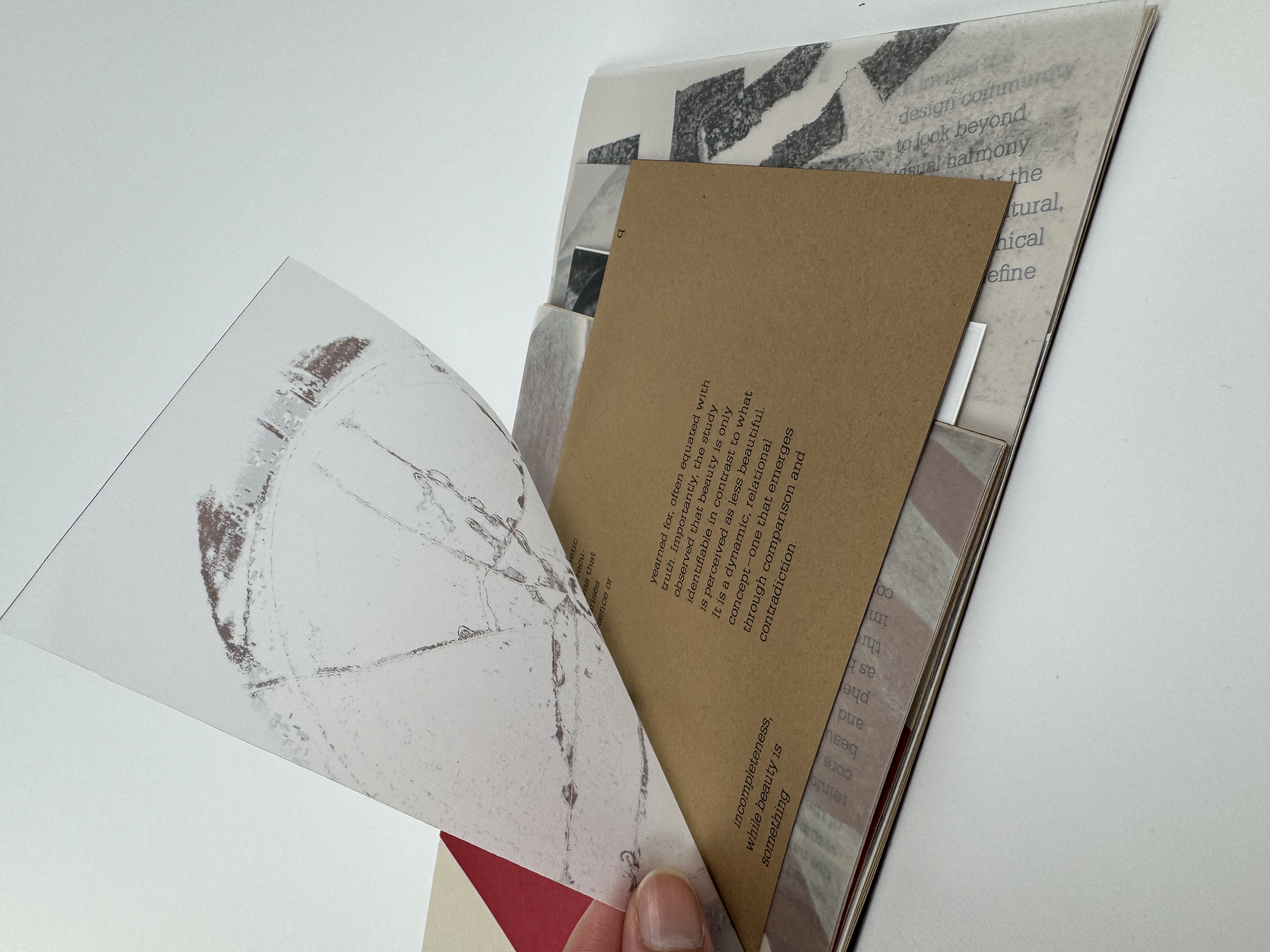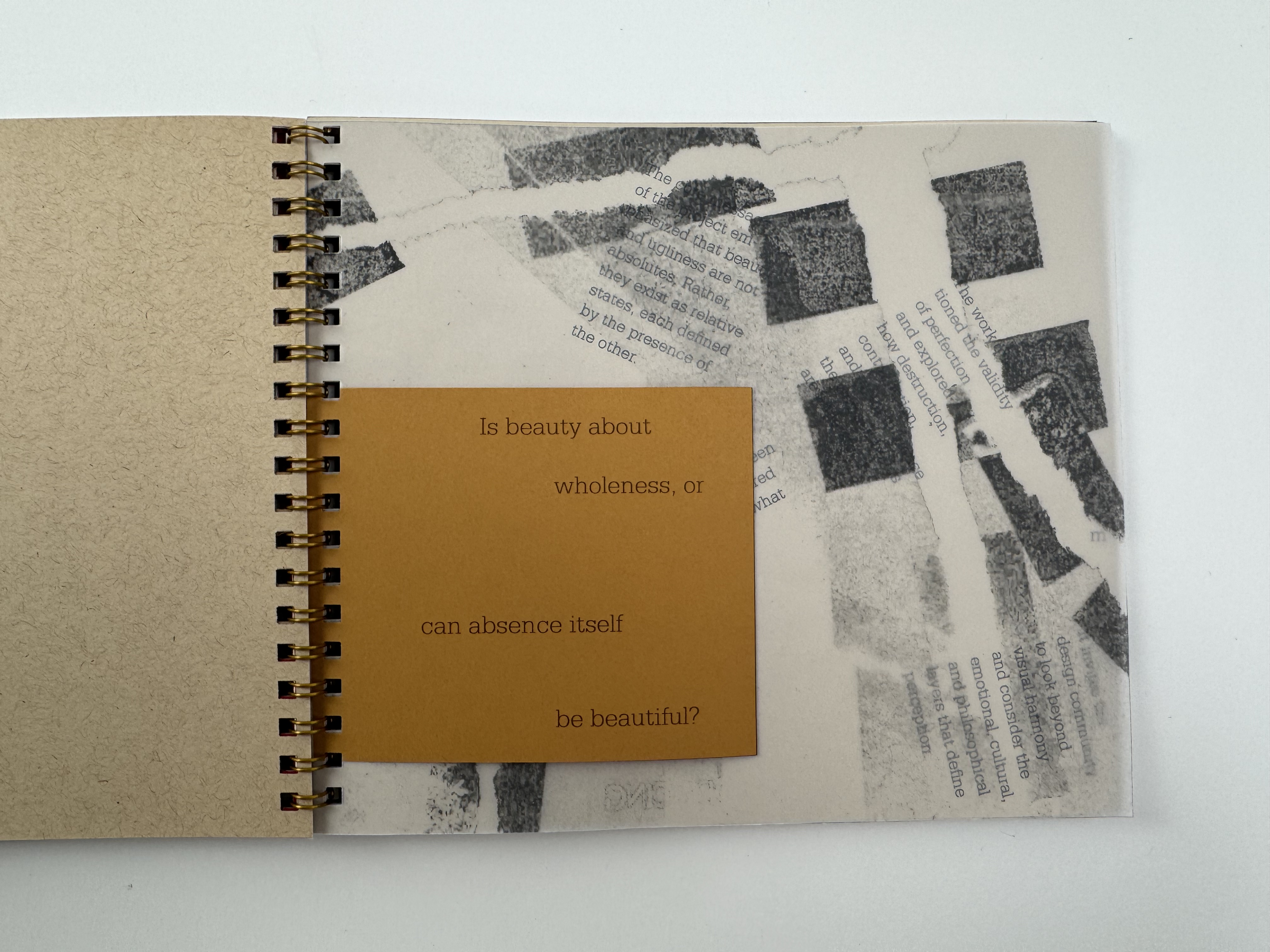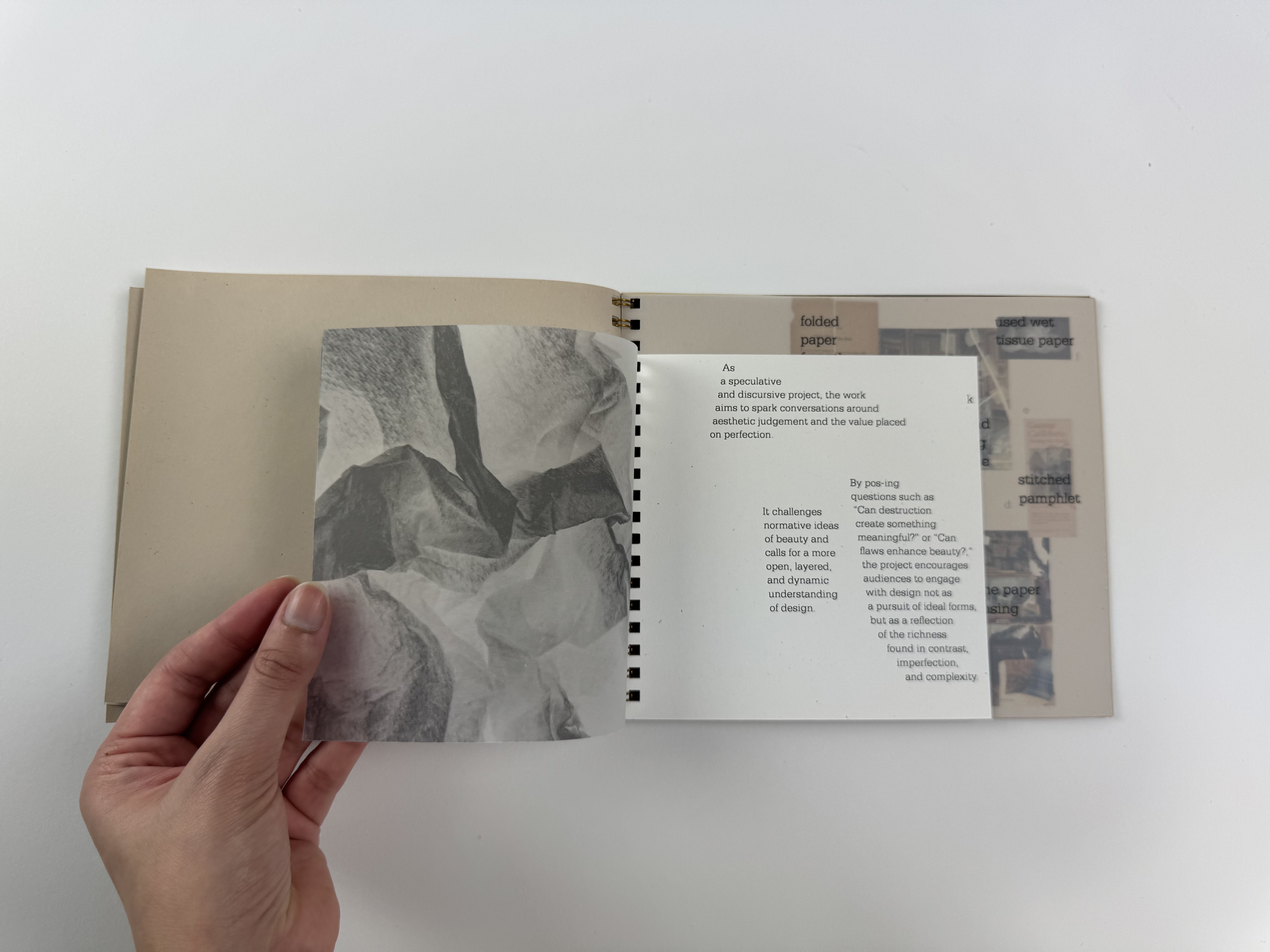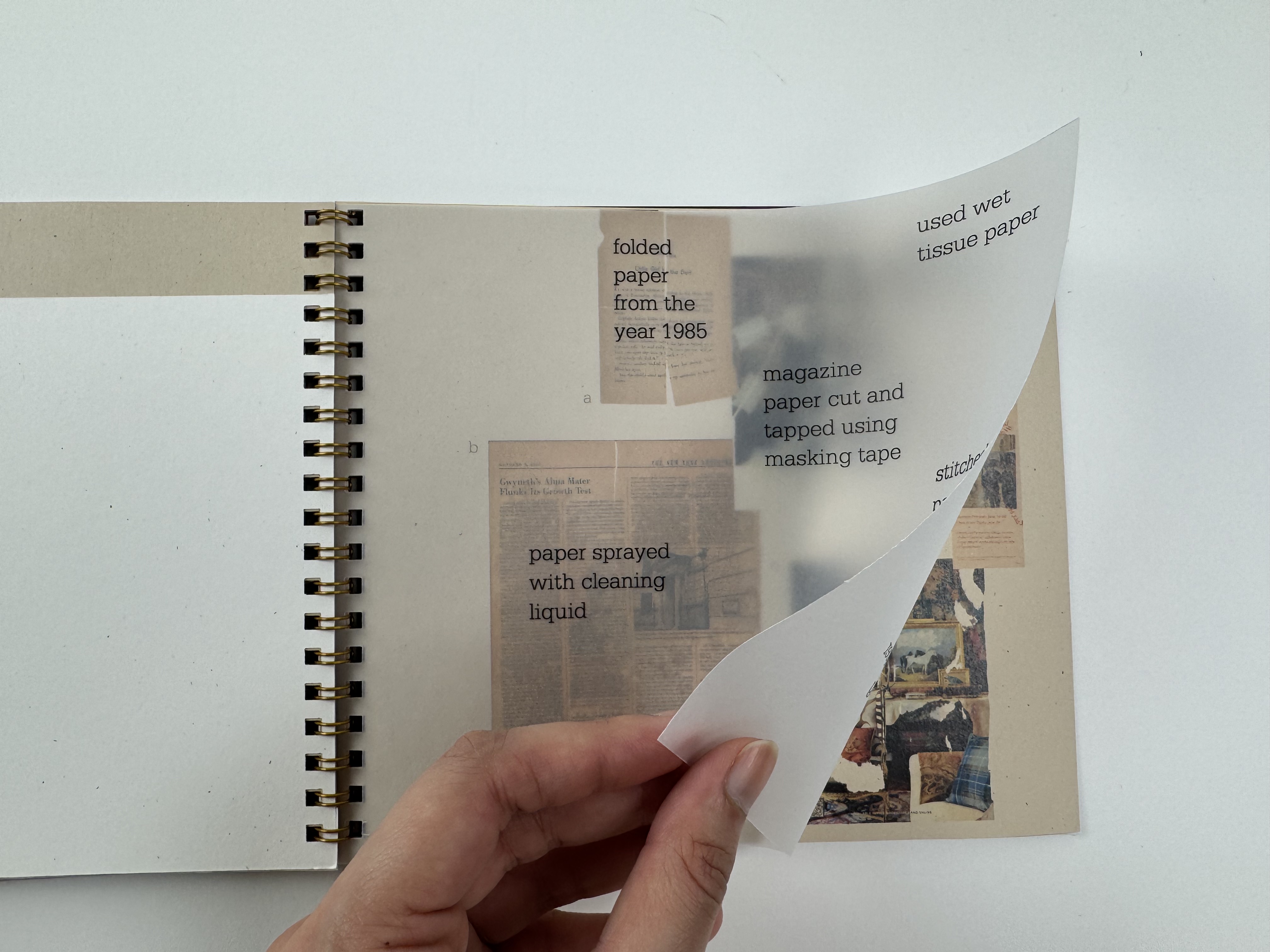What does the book convey?
Together, beauty and ugliness constitute a concept that is molded by personal perception and understanding, layers of interpretation that are constructed by a person's cultural background, geographic location, and life experiences. These layers create impressions that shape a person's decisions and evaluations for the rest of their life. A book, which is a tactile and visual object composed of pages with varying sizes, colors, and textures, is what I have created out of this complex ideology. The book itself becomes a metaphor for the complexity of perception, demonstrating how opinions are shaped by a variety of factors rather than being definitive or unique. My art examines how the ideas of beauty and ugliness are products of the human imagination rather than being grounded in any unchanging reality. These conceptual layers, which are constantly filtered and altered throughout life, reflect the overlapping and evolving concepts in the human brain. The book offers an embodied understanding of perception as fragmented, fluid, and intensely personal by inviting the reader to experience this ongoing re-evaluation through material, form, and narrative.
How is it important?
My book brings out the realness of the project in a way that I don’t think any other medium can show right now. It presents the idea through its pages, textures, and form in a very practical and direct way. While I do have an installation piece that acts as a model to represent my thesis, I feel that the book completes the whole story I am trying to tell. It adds more meaning and helps explain the concept better to the viewer. The book allows people to connect with the idea through something they can hold, see, and flip through, making the layered thoughts and perceptions I talk about feel more real and easier to understand.
Layout of the book
A newly created grid structure, derived from the experimental items used in the thesis study—tissues, plates, newspapers, shirts, and magazines—has been used to arrange the content inside the book. During and after the experiments, physical patterns that developed in or on these objects were closely examined and subsequently extracted. The book's layout was constructed using these patterns as a guide, which helped determine how the content was arranged on each page. Through this process, the research and the book's visual structure are directly linked, allowing the form and content to complement one another and represent the main idea.

